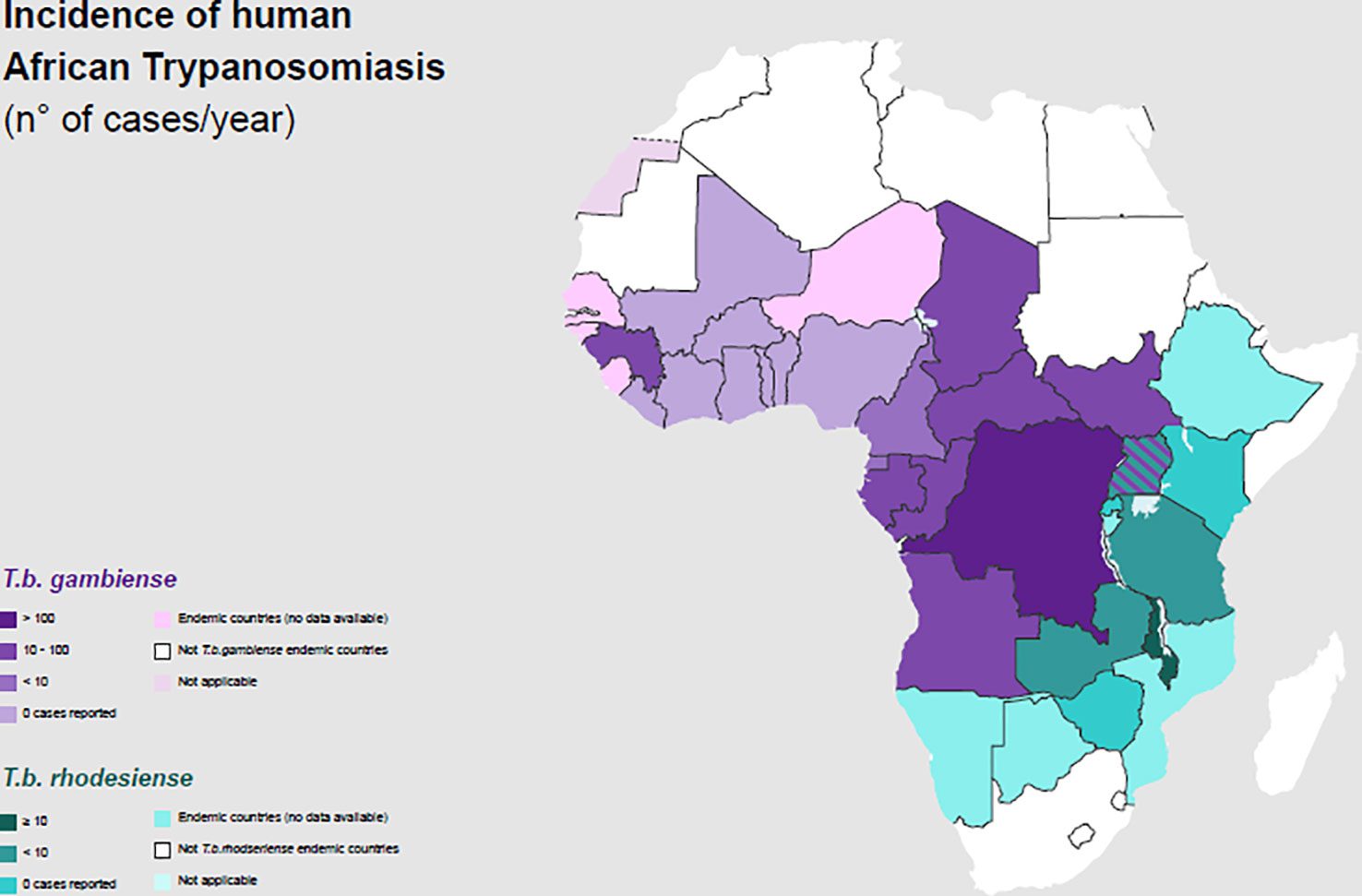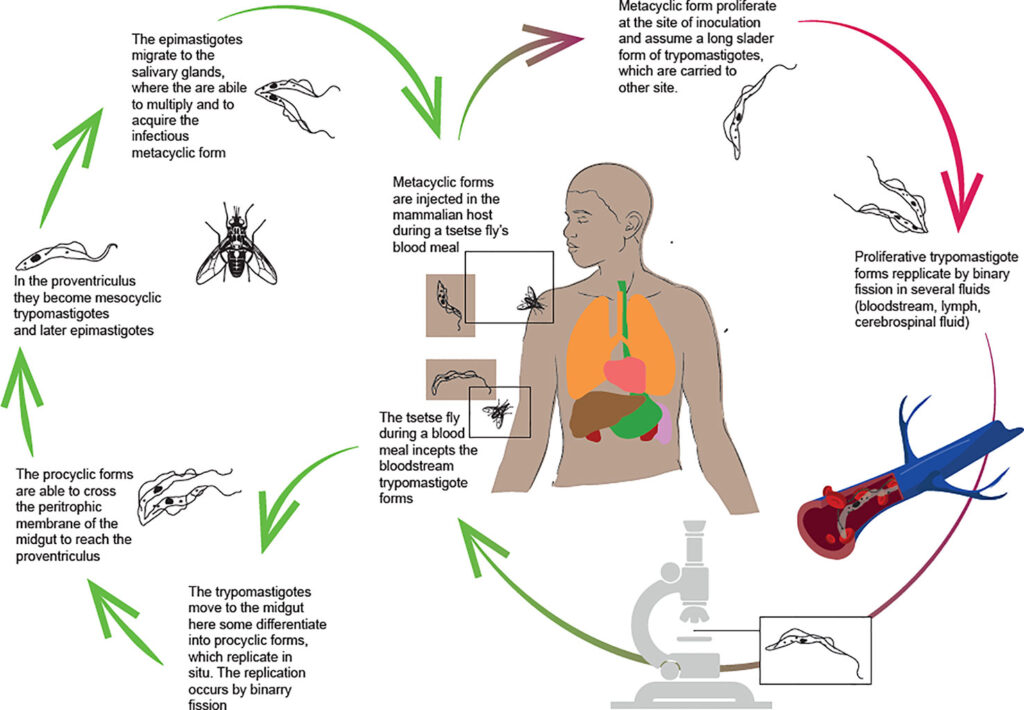African Sleeping Sickness, also known as Trypanosomiasis, is a serious and potentially life-threatening disease that affects thousands of people in sub-Saharan Africa. Abbreviated as HAT (Human African Trypanosomiasis), this condition is caused by parasitic protozoa transmitted through the bite of infected tsetse flies. The disease progresses in stages, with symptoms ranging from mild fever to severe neurological complications, making early diagnosis and treatment crucial for survival.

What Causes African Sleeping Sickness?
The primary cause of African Sleeping Sickness is infection by parasites belonging to the Trypanosoma genus. These microscopic organisms are transmitted to humans through the bite of tsetse flies, which are found predominantly in rural areas of sub-Saharan Africa. Understanding the lifecycle of the parasite and the role of the tsetse fly is essential to grasp how the disease spreads.
The Role of Tsetse Flies
Tsetse flies are blood-feeding insects that thrive in warm and humid environments. When a tsetse fly bites an infected human or animal, it ingests the parasites along with the blood. Inside the fly, the parasites undergo a transformation and multiply, eventually migrating to the fly’s salivary glands. When the infected fly bites another person, it injects the parasites into their bloodstream, initiating a new cycle of infection.
Types of Parasites Involved
There are two main types of parasites responsible for African Sleeping Sickness:
- Trypanosoma brucei gambiense: This parasite is responsible for the majority of cases and is commonly found in West and Central Africa. It causes a chronic form of the disease that progresses slowly over months or even years.
- Trypanosoma brucei rhodesiense: This parasite is less common but more aggressive, leading to an acute form of the disease that develops rapidly within weeks. It is primarily found in East and Southern Africa.
Symptoms of African Sleeping Sickness
The symptoms of African Sleeping Sickness vary depending on the stage of the disease. The progression typically occurs in two distinct phases: the hemolymphatic phase and the neurological phase.
Hemolymphatic Phase
In the initial stage, the parasites multiply in the blood and lymphatic system, causing a range of flu-like symptoms. Common signs during this phase include:
- Fever and chills
- Headaches and muscle pain
- Swollen lymph nodes, particularly in the neck
- Rashes on the skin
- Joint pain
This stage can last for weeks or months, and the symptoms may come and go, making it difficult to diagnose the disease without specific testing.
Neurological Phase
If left untreated, the parasites eventually cross the blood-brain barrier and invade the central nervous system, leading to the second stage of the disease. During this phase, the symptoms become more severe and debilitating. Key indicators include:
- Disrupted sleep patterns, including insomnia at night and excessive daytime sleepiness
- Confusion and difficulty concentrating
- Mood swings and irritability
- Poor coordination and tremors
- Seizures or coma in advanced cases
The neurological phase is particularly dangerous, as it can lead to irreversible damage and death if not treated promptly.
Diagnosis of African Sleeping Sickness
Diagnosing African Sleeping Sickness can be challenging due to its nonspecific symptoms in the early stages. However, several methods are used to confirm the presence of the disease.
Clinical Evaluation
A healthcare provider will begin by taking a detailed medical history and conducting a physical examination. They will look for signs such as swollen lymph nodes, rashes, and neurological abnormalities. Travel history to endemic regions is also critical in raising suspicion of the disease.
Laboratory Tests
To confirm the diagnosis, laboratory tests are necessary. These include:
- Blood Tests: A sample of blood is examined under a microscope to detect the presence of parasites.
- Lymph Node Aspiration: Fluid from swollen lymph nodes may be extracted and analyzed for parasites.
- Cerebrospinal Fluid Analysis: In cases where the disease has progressed to the neurological phase, a lumbar puncture may be performed to check for parasites in the cerebrospinal fluid.
- Serological Tests: Blood samples can be tested for antibodies against the parasites, although these tests are not always definitive.
Treatment of African Sleeping Sickness
The treatment of African Sleeping Sickness depends on the stage of the disease and the type of parasite involved. Early intervention is crucial to prevent complications and improve outcomes.
Treatment for the Hemolymphatic Phase
In the early stage of the disease, medications are administered to kill the parasites in the blood and lymphatic system. Common drugs used include:
- Pentamidine: This drug is effective against Trypanosoma brucei gambiense and is generally well-tolerated.
- Suramin: Used to treat infections caused by Trypanosoma brucei rhodesiense, this medication requires careful administration due to potential side effects.
Patients receiving these treatments must be closely monitored for adverse reactions, and follow-up testing is essential to ensure the parasites have been eradicated.
Treatment for the Neurological Phase
When the disease progresses to the neurological phase, more aggressive treatments are required to target parasites in the central nervous system. Options include:
- Eflornithine: This drug is highly effective against Trypanosoma brucei gambiense and is often used in combination with other medications to enhance efficacy.
- Nifurtimox-Eflornithine Combination Therapy (NECT): This combination has become the standard treatment for late-stage Trypanosoma brucei gambiense infections, offering improved outcomes compared to monotherapy.
- Melarsoprol: Although effective against both types of parasites, this drug is toxic and associated with severe side effects, including reactive encephalopathy in some cases.
Treatment during this phase often requires hospitalization to manage complications and monitor the patient’s response to therapy.
Prevention of African Sleeping Sickness
Preventing African Sleeping Sickness involves reducing exposure to tsetse flies and controlling the spread of the disease in endemic areas.
Personal Protective Measures
Individuals living or traveling in affected regions can take steps to minimize their risk of infection:
- Wear long-sleeved clothing and pants made of thick fabric to protect against bites.
- Use insect repellents containing DEET or permethrin.
- Avoid areas with high tsetse fly populations, especially during peak activity times.
- Inspect vehicles and homes for tsetse flies before entering.
Public Health Interventions
Efforts to control the spread of African Sleeping Sickness focus on vector control and surveillance:
- Trapping and eliminating tsetse flies using insecticides and traps.
- Screening and treating livestock, which can serve as reservoirs for the parasites.
- Conducting regular health screenings in at-risk communities to identify and treat cases early.
These measures require collaboration between governments, healthcare organizations, and local communities to achieve sustainable results.





